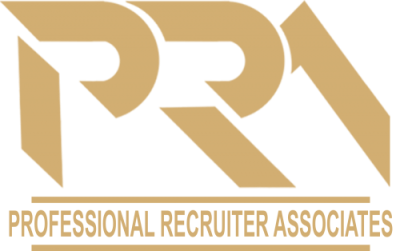HR Pros Focus on Health, Work-Life Balance
 Encourage-healthy-lifestyle-Work-life-balance
Encourage-healthy-lifestyle-Work-life-balance
September 2022
YOUNGSTOWN, Ohio – As the initial shock of the pandemic wears off, employees are now taking a closer look at their benefits and the quality of their life at work.
Dee McFarland, owner of Reliable Consulting Group in Youngstown, says before the pandemic, employees were vaguely aware of their benefits but didn’t pay attention to the details. Now that’s changing, especially when it comes to health insurance.
“Employees are looking at how things are covered and are wanting to know how much is coming out of their pockets and actually paying attention to what their benefits do,” she says.
McFarland, a benefits counselor, says employees are looking for employers to pay a higher percentage of their health insurance. She attributes that partly to the pandemic, as well as inflation and an economic downturn that experts fear may be around the corner.
“Everyone is feeling the crunch of higher prices everywhere. Plus with the recession, they don’t want to be paying more for benefits,” she says. “They don’t want to be losing more of their paycheck due to high costs everywhere else.”
Medical claims sharply dropped at the onset of the pandemic, mainly because people couldn’t seek preventative and elective care, according to Wisconsin-based Employee Benefits Corporation (EBC). With the changing health care landscape and reopening of medical facilities, insurers are seeing claims activity trend upward.
One possible explanation for the rise in claims is that individuals are more health-conscious since the pandemic began.
According to a study done by IPSOS, a multinational market research and consulting firm, 62% of Americans say their health is more important to them now than before the pandemic.
EBC recommends that employers consider the significance that employees are placing on their health and well-being when crafting a benefits package.
And McFarland says that in order to attract and retain employees, some employers are now waiving or shortening the waiting period for benefits.
“Generally, an employee will need to wait 90 days before benefits start and I’ve had a few of my employers actually lessen that waiting period to more like 30 or 60, rather than 90 days,” she says.
But benefits are not the only priority for current and potential employees. Building critical skills and competencies tops the list of priorities for the fourth straight year. That’s the conclusion of Gartner’s annual survey of more than 500 human resources leaders across 60 countries and all major industries. Gartner is a research firm based in Connecticut.
Many HR leaders also identify priorities as change management, leadership, and diversity, equity and inclusion initiatives. And most HR leaders say that improving operational excellence will be critical in 2022, the Gartner survey found. Far more than in prior years, executing business transformation is also a major focus.
As hybrid work drives business transformation, a vast majority of HR leaders (95%) expect that at least some of their employees will work remotely after the pandemic. This shift to hybrid work will be a massive transformation driver and HR leaders must be prepared to support, the Gartner survey concludes.
According to the 2022 LinkedIn Global Talent Trends Report, a work-life balance is the most important factor that individuals sought when looking for a new position. EBC recommends that employers consider where the employee is required to work, what hours they work, and how much time off they receive in order to prioritize work-life balance.
One way employers are giving employees increased flexibility is by offering remote or hybrid work opportunities to those who don’t wish to go into the office every day. Others allow employees to work less structured hours – maybe three longer days and two shorter days each work week, according to EBC.
Joanna Forbes, owner and chief consultant of Forbes Human Resources LLC, Boardman, says HR departments must properly approach a hybrid work model for it to be effective.
She affirms that more companies are implementing a flex schedule after employees became comfortable with working from home early in the pandemic.
“If you are going to have a hybrid workforce, you have to have policies that protect your employees while they’re at home, and also manage expectations,” Forbes says. “You also want the employers to make sure they outline expectations for their staff, like how to be online. There must be some sort of expectation.”
Forbes says another important part of having a hybrid workforce is maintaining employee morale. Remote workers can feel isolated. Implementing procedures such as daily or weekly huddles, virtual social hours and regular check-ins can make them feel included. She says HR leaders and employers must make the entire group feel valued and seen, not just the in-person workers.
“You don’t want to let those employees feel like they’re not part of the group. You want to stay connected to them. Whether that’s daily, weekly, whatever is appropriate for the industry or the office,” Forbes says.
Gartner’s survey also found that workforce health is being eroded. Employee performance stayed high during the pandemic. But disruptions have already made long-term and hard-to-reverse impacts on workforce health – that is, the health of employees, the state of trust between individuals, teams and leadership, and the work environment. Ineffective approaches to hybrid work will only exacerbate these impacts.
The need for competitive benefit packages and expanded HR polices stems from the so-called “great resignation.” According to the Bureau of Labor Statistics, more than 47 million employees quit their jobs in 2021, leading to an immense amount of job openings and employers struggling to fill open positions. Benefit expectations are increasing, and employees are expecting more from their employer or potential employer.
Forbes says the applicant pool is smaller than ever. She says recruiters are constantly trying to find ways to attract employees. According to a 2022 MetLife study, 73% of employees say that a wider benefit offering would keep them at their present employer for longer.
“The major priority for the employers, especially in our area, is just a lack of employees and applicants. Everybody’s kind of reaching into the same pool for the same applicants. And it’s extremely difficult to recruit,” Forbes says.
Forbes explains that most companies have their hands tied when it comes to tweaking health insurance benefits, but echoed McFarland’s observation of employers paying a higher percentage.
Most incentives companies are offering are financial. Salaries are higher than ever, she notes, which is great for employees but can strain company budgets.
Meanwhile, more companies are offering sign-on bonuses, Forbes observes, particularly in the trades.
“You used to just see those bonuses for higher health care positions like nursing. Now you’re seeing them for entry-level positions, even in the fast-food restaurants,” she says.
Gartner reports that another prominent HR trend is employees wanting to feel understood and valued. HR leaders need to build a more human employer-employee relationship to meet employees’ demands to be heard and valued.
The top HR priorities for 2022, according to Gartner, are forcing organizations to change their workforce and workplace strategies, which, in turn, means HR leaders are having to evolve the way they identify, attract and retain employees.

Professional Recruiter Associates